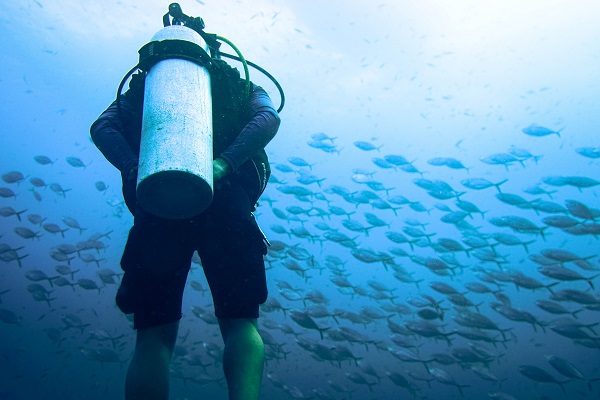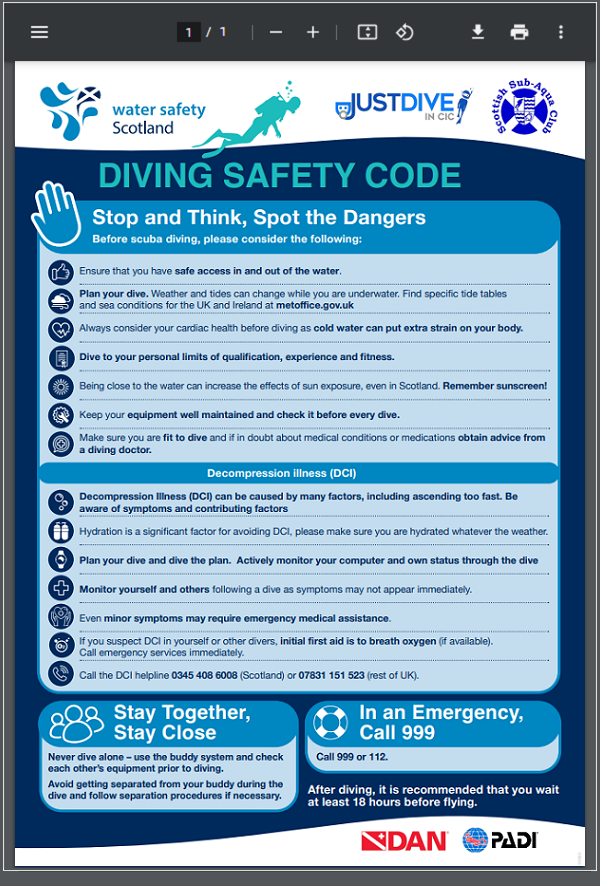Diving
Sub-aqua diving is a popular sport, that is enjoyed by people from all walks of life across the globe. Exploring the fascinating underwater world with its beautiful reefs, interesting marine life and mystic wrecks gives great joy to many. However, it shouldn’t be forgotten that sub-aqua diving is a sport with very specific risks and dangers.
What is the risk?
Between 2011 and 2015, there were 50 scuba fatalities in UK waters*. Sadly, many of these losses could have been prevented with improved diving preparation and personal diving skills.
Knowing what to do if something goes wrong at sea can make the vital difference between life and death. You could be rescued more quickly – or may not even need rescuing at all – if you have the right skills and kit.
Risks include decompression illness (DCI, the “bends”), arterial air embolism, and of course drowning. There are also effects of diving, such as nitrogen narcosis, that can contribute to the cause of these problems.
Minimising the risk
- Be fit to dive - Prepare yourself by being fit to dive – cold water will put extra strain on your body. Always consider your cardiac health before diving and get any concerns checked out.
- Check your diving equipment - Repeatedly check your diving equipment. Your equipment is your lifeline. Make sure to always check your equipment pre and post dive. This is particularly pertinent after a long period of time off from diving and when using new equipment.
- Plan your dives - Check the weather and tides. Find specific tide tables and sea conditions for the UK and Ireland at Beach forecast and tide times - Met Office
- Always dive with a buddy - Check that your and your buddy’s equipment is dive safe prior to entering the water. Remain aware of each other’s surroundings and conditions throughout the diving process to achieve the most fulfilling dives. Buddy diving is safe diving.
- Be spotted - All divers should carry a surface marker buoy (SMB) or delayed surface marker buoy (DSMB) on every dive to aid their visibility to all surface craft.
- Carry a means of calling for help. Consider carrying a personal locator beacon (PLB) or similar device in a waterproof canister or pouch

Further information
-
Please visit the Diving in Scotland | Scottish Sub Aqua Club (scotsac.com) webpages.

